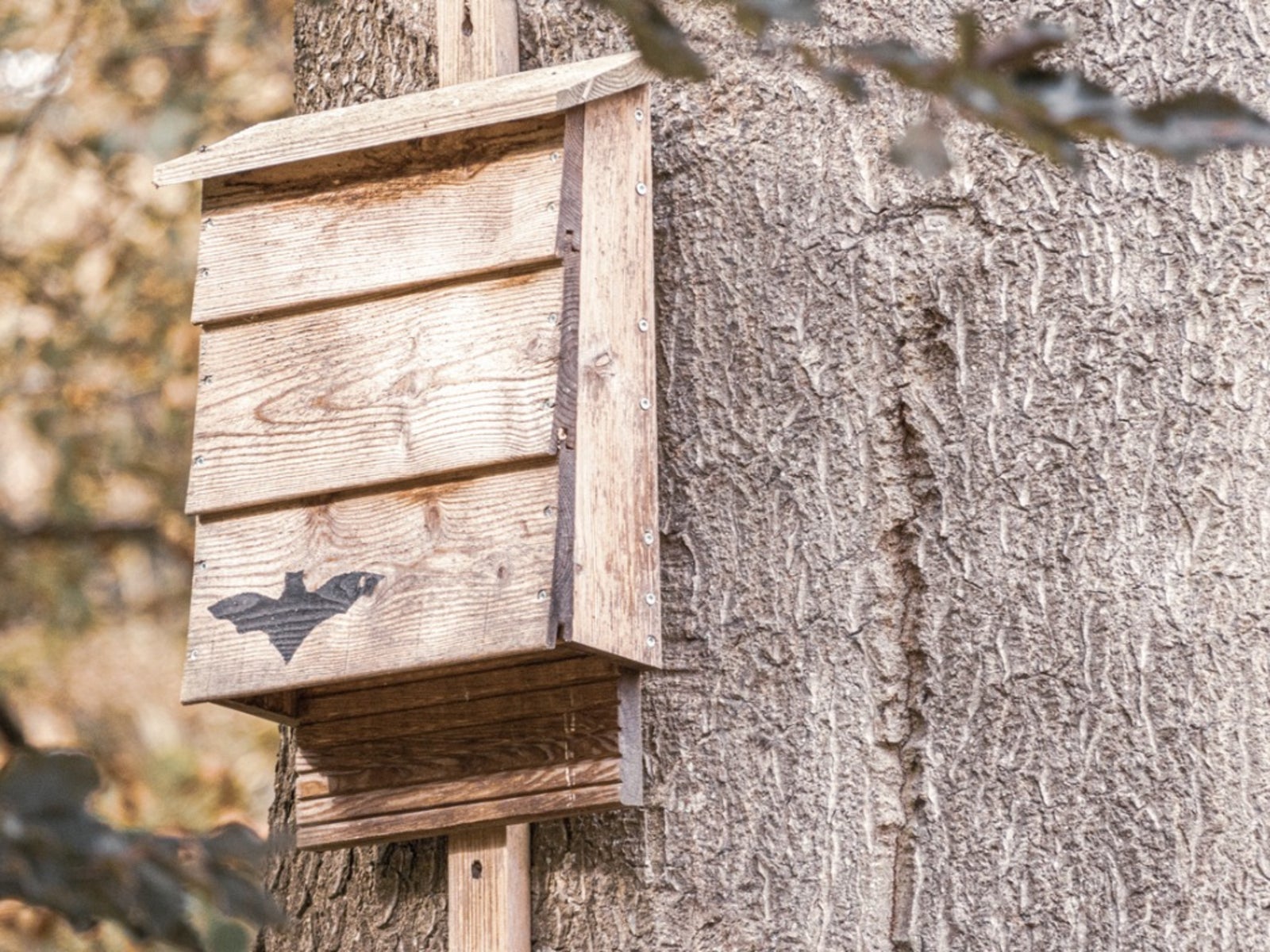Bat House Location: How To Attract Bats To A Bat House To The Garden


Bats are victims of bad PR. They carry rabies, tangle in your hair, suck the blood from their victims and turn into vampires on dark and stormy nights. Poor bats! Their unwarranted reputations have been the result of bad press and worse movies. Most of the myths you've heard are simply untrue. The truth is, attracting bats to your backyard is one of the safest and most efficient methods out there for natural insect control. One little brown bat can eat 1,200 insects per hour. Now imagine what a small colony can do! One of the best ways of attracting bats to your yard is by building a bat house. Learning how to attract bats to a bat house takes a little effort, but it's definitely worth it. Just think about how pleasant it will be to sit outside on a balmy, bug-free summer night watching the swoops, dips, and squeaks of your very own nighttime entertainment. That's what building a bat house can offer.
Bat House Location: How to Attract Bats to a Bat House
Your bat house's location is one of the most important factors in how to attract bats to a bat house. Bat house plans abound, but the best plans in the world won't be attracting bats if it's not in the right place. The temperature inside the house is critical. These furry little creatures prefer temperatures between 85 to 100 degrees F. (30-38 C.). Warm, sunny spots are a must for bat house locations and the color you choose will also affect the warmth or coolness of the structure. The houses should be painted brown or gray. Three coats of flat, exterior, water-based paint are best. A house that gets only a few hours of sun a day should be painted a darker shade while a lighter color should be used on boxes with a long daily sun exposure. Many bat lovers find success in double houses either side by side or back to back, one side dark and one side light. This method allows the bats to relocate within the structure according to their needs. Your bat house location should be within a quarter mile of a freshwater source; a pond, stream, or artificial source is fine. Bats prefer a home that is supported by a pole or the side of a building and 15 to 20 feet (5-6 m.) off the ground. These two criteria for bat house locations offer the inhabitants open, direct flight access and better protection from predators such as birds of prey and snakes. If using a pole, consider a baffle as well. Size matters. There are many bat house plans available on the Internet and most will work in areas where a colony is already established, but if your concern is how to attract bats to a bat house where none were before, bigger is better. They offer a greater variation in interior temperatures and the space needed for females and their pups. Bat houses can be set out at any time during the year, but since bats tend to set up their colonies in early spring, building a bat house can be a great winter project.
Bat House Plans: Building a Bat House
Now that you know how to attract bats to a bat house and have chosen your plan, it's time to begin building. A bat house, according to extensive bat research, should have chambers at least 14 inches (36 cm.) wide and 24 inches (61 cm.) tall. It should have a wide landing area with a very rough surface beneath the entrance. Use ½ inch (1 cm.) exterior plywood or cedar for the construction. Both have the rough surfaces bats need to grasp, although it doesn't hurt to roughen the interior even more. Do not use pressure treated lumber. Modern methods of preservation that may no longer be harmful to humans may still be harmful to bats. Bats need a waterproof environment, so regardless of your bat house plan's instructions, it is recommended to caulk all outside seams on the walls and roof. Consider a metal or shingle clad roof. It will help keep heat in and rain out, and prolong the life of the structure. Once you've chosen your bat house location and have your structure painted and hung, it's time to look at the future. Maintenance of the house and good health practices are important too. Any wasp nests should be cleaned out each winter and new caulk and paint should be applied every three to five years. Collect bat guano regularly with a shovel and gloved hands and dispose of it in your compost pile or garden beds. It makes a great organic fertilizer. Lastly, please remember that these creatures are wild animals. Warn children and visitors that they are not to be caught or touched. The threat of rabies is minimal, but bats can still give a nasty bite when frightened or provoked.
Sign up for the Gardening Know How newsletter today and receive a free copy of our e-book "How to Grow Delicious Tomatoes".

Jackie Rhoades began writing for Gardening Know How in 2010.